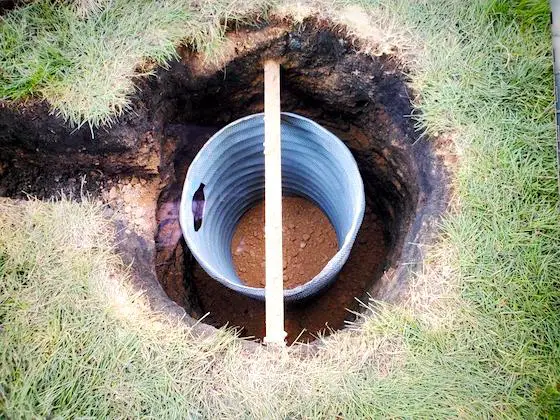
This is a dry well installation missing the gravel. This poor homeowner wasted his time and you'll see why in the next photo. (C) Copyright 2021 Tim Carter
Dry Well Installation - They Rarely Work
Do you think a dry well installation job is going to solve your drainage problem? You've come to the right place. I'm a college-trained geologist with a focus in hydrogeology - the study of groundwater.
Why Don't Dry Wells Work?
Dry wells don't work in most cases because the subsoil in the pit is often a medium or dense clay. The reason potters use clay to make pots and bowls is that water can't travel through it. Your dry well simply becomes a tiny swimming pool or pond in your yard.
Look at the dense hard clay that is just below the topsoil in the above photo:
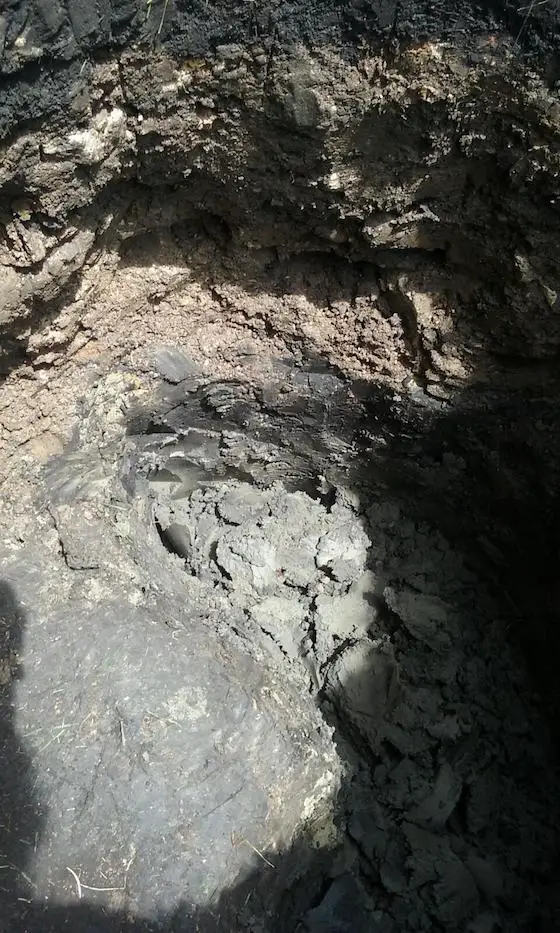
Look at the horrible dense clay in this soil. There's no way water is going to soak into the soil . (C) Copyright 2021 Tim Carter
The problem gets worse though. It's all a matter of capacity.
CLICK or TAP HERE to get FREE BIDS from local contractors who can solve drainage issues.
How Much Water is in a Dry Well?
There's little space for water in most dry wells because the hole is filled with gravel and stones! Let's do the math on the above dry well the homeowner dug.
I estimate the diameter of the hole is 24 inches based on the trench entering the left of the dry well. That trench is probably 5 or 6 inches wide. The dry well is probably 30 inches deep. It's hard to dig a hole much deeper with such a narrow throat.
Assuming the dimensions above are correct, the homeowner removed 7.85 cubic feet of earth digging the dry well.
There are 7.48 gallons of water in a cubic foot. This means the dry well with nothing in it could only hold 58.74 gallons of water.
How Much Space Does the Gravel Take Up?
The gravel in a dry well consumes a vast amount of the space. It reduces the capacity of the water the well can hold. Look at this next photo sent to me by the homeowner. I think you might agree the gravel takes up at the very least 80% of the space in the dry well.
If the gravel does take up 80% of the space, then the dry well in these photos can only hold 11.74 gallons of water!
If you're using a dry well to capture the water from your roof, you'll need lots of wells! One inch of rain on an average roof can produce about 2,000 gallons of water!
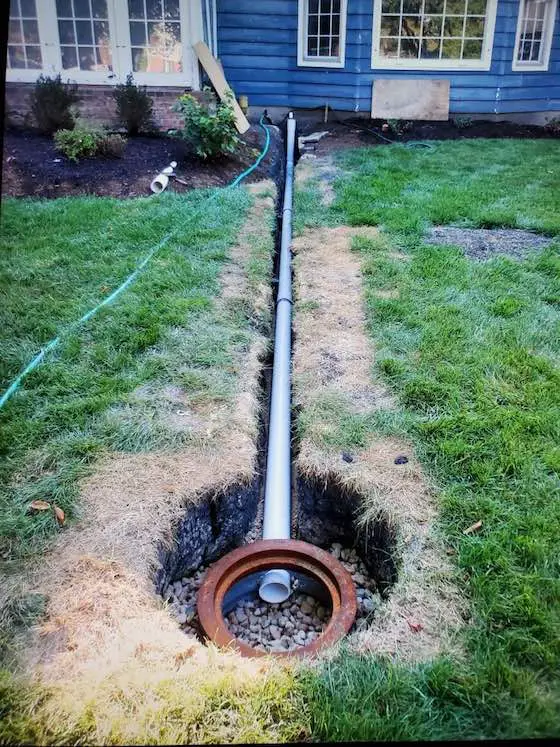
Look how much space the gravel takes up! It's got to be over 70 percent of the volume of the actual empty dry well. (C) Copyright 2021 Tim Carter
Where Does the Water in a Dry Well Go?
The water in a dry well will slowly move through soil that has air spaces in it. Topsoil usually has lots of air space, but in many locations topsoil is thin, often less than 3 inches thick.
I grew up in Cincinnati, Ohio and the soil profile for much of the region is a very thin topsoil usually about 2-3 inches thick. You immediately then encounter a dense brown or gray clay that doesn't drain at all.
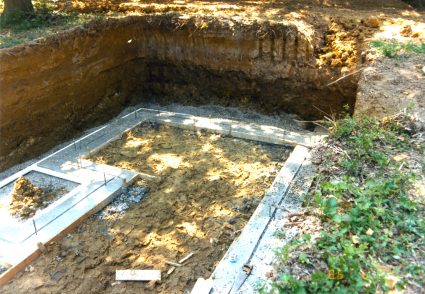
This is the soil profile at my last house in Cincinnati, OH. Look how thin the topsoil is - it's barely 4 inches just below the grass in the upper left corner of the photo. You can see the two distinct dense-clay glacial soils above the footing on the far wall. The medium-brown soil was deposited by the Wisconsin Continental Glacier that left the area about 12,000 years ago. The dark-brown soil beneath it was from the Illinoisian Continental Glacier that left the area about 600,000 years ago. (C) Copyright 2021 Tim Carter ALL RIGHTS RESERVED - DO NOT COPY this photo without permission.
I moved to central New Hampshire in 2008 and the soil here is completely different. It's amazing sandy well-drained soil. The rich topsoil is also just a few inches deep in most locations but the subsoil under it has a tremendous amount of sand in it and water flows readily through it to the bedrock below. There are many clear-running springs throughout the area created by these soil conditions. The Breck-Plankley spring in Bristol, NH is but one example.
What's Better Than a Dry Well?
You should deal with water exactly as Mother Nature does. She allows water to flow overland or soak into the soil.
Roof water should be piped to the lowest spot on your lot as far away from your house as is practical. Installing downspout drain lines is easy in shallow trenches.
Subsurface water moving through the topsoil or in sandy subsoil can be captured and diverted around your home using a trench drain or linear french drain.
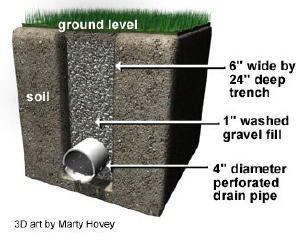
Cross-section of a Trench Drain or Linear French Drain including the all-important perforated french drain pipe. I can CALL YOU ON THE PHONE to help you solve your drainage problem. Copyright 2021 Tim Carter ALL RIGHTS RESERVED - Do NOT COPY this graphic.
I've helped thousands of homeowners solve wet basements and crawlspaces with these trench drains by talking to them on the phone. The typical phone call lasts 30 minutes or less.
Column
The post Dry Well Installation appeared first on Ask the Builder.
Via builders feed http://www.rssmix.com/
No comments:
Post a Comment